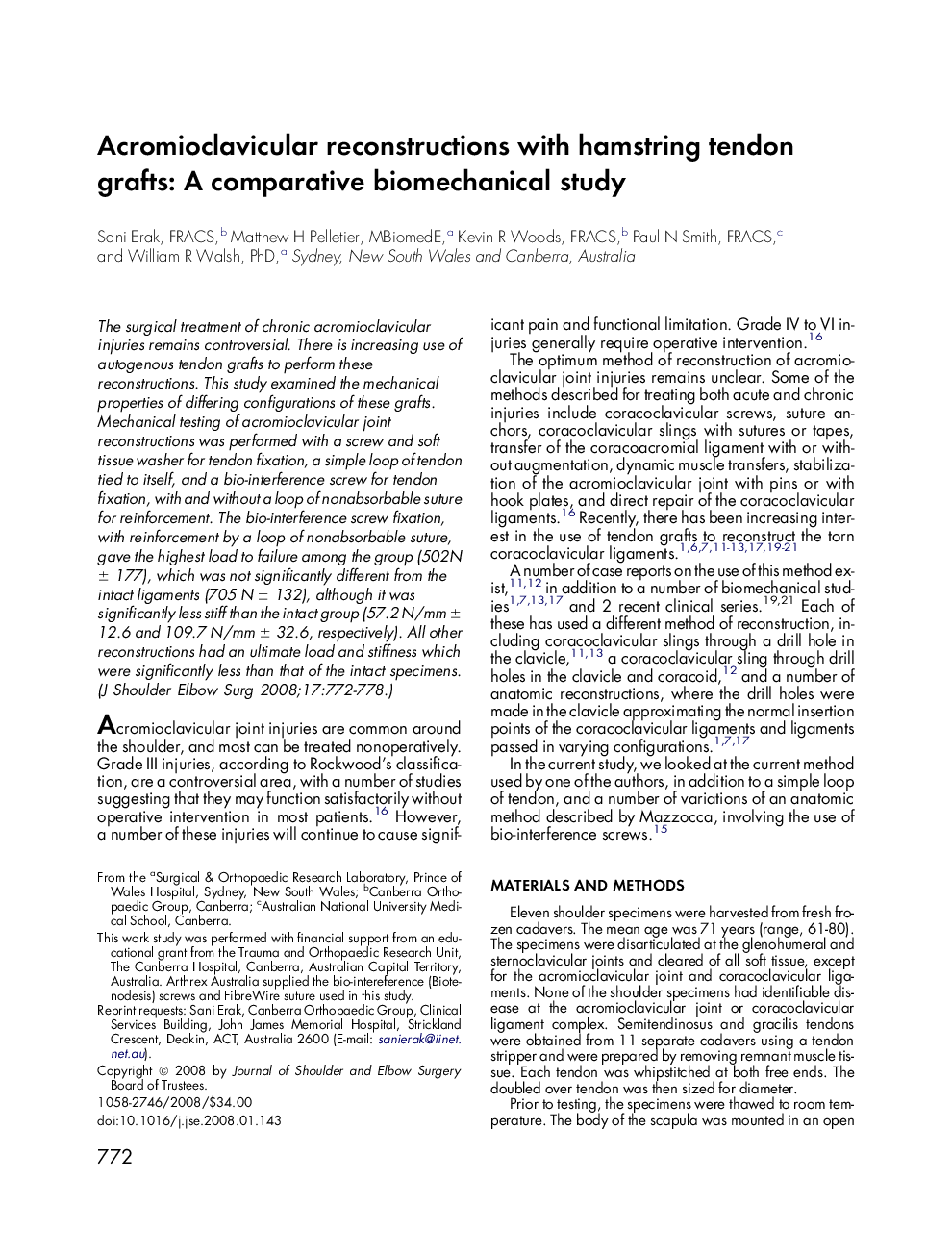| Article ID | Journal | Published Year | Pages | File Type |
|---|---|---|---|---|
| 4075714 | Journal of Shoulder and Elbow Surgery | 2008 | 7 Pages |
The surgical treatment of chronic acromioclavicular injuries remains controversial. There is increasing use of autogenous tendon grafts to perform these reconstructions. This study examined the mechanical properties of differing configurations of these grafts. Mechanical testing of acromioclavicular joint reconstructions was performed with a screw and soft tissue washer for tendon fixation, a simple loop of tendon tied to itself, and a bio-interference screw for tendon fixation, with and without a loop of nonabsorbable suture for reinforcement. The bio-interference screw fixation, with reinforcement by a loop of nonabsorbable suture, gave the highest load to failure among the group (502N ± 177), which was not significantly different from the intact ligaments (705 N ± 132), although it was significantly less stiff than the intact group (57.2 N/mm ± 12.6 and 109.7 N/mm ± 32.6, respectively). All other reconstructions had an ultimate load and stiffness which were significantly less than that of the intact specimens.
